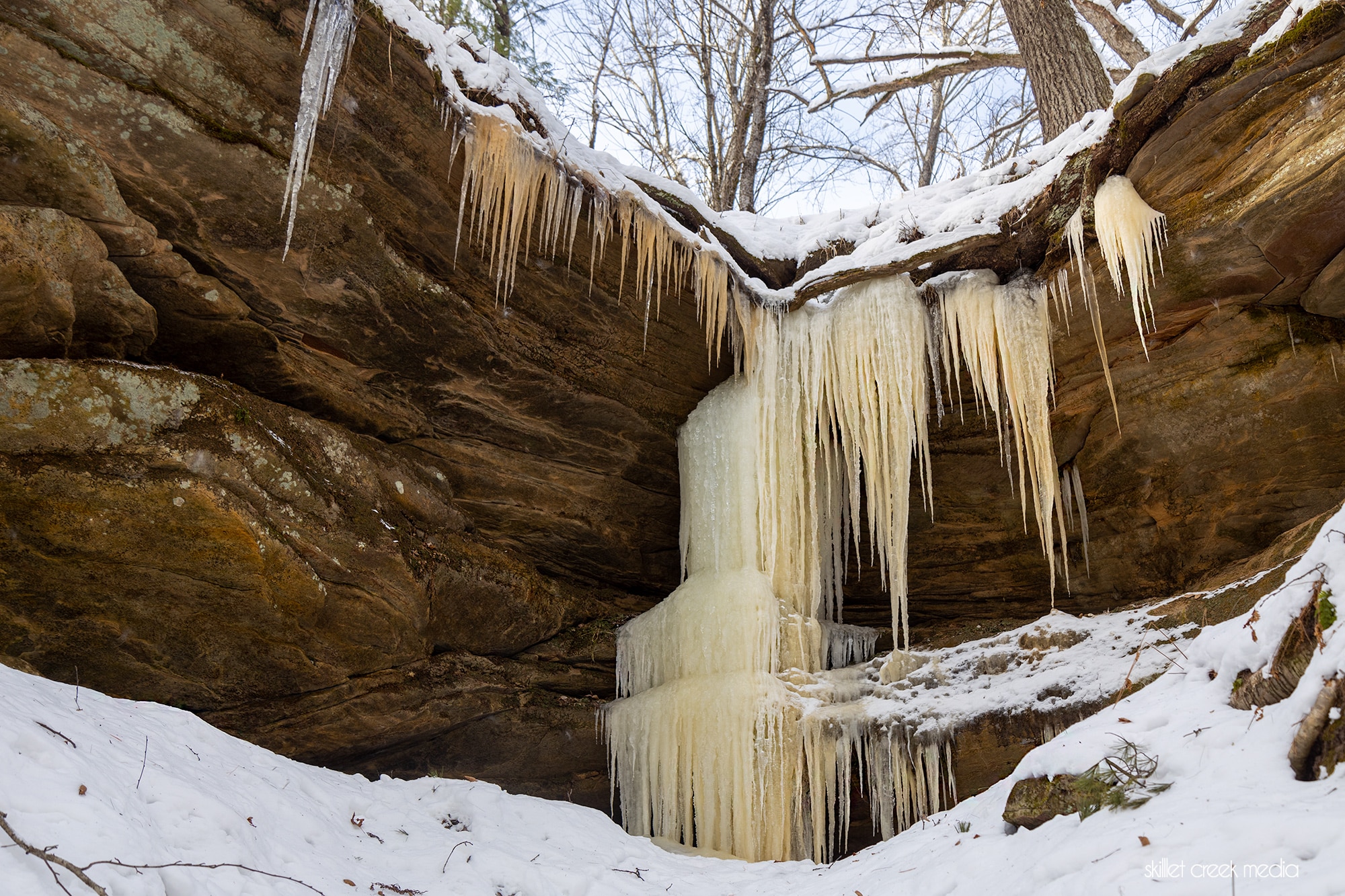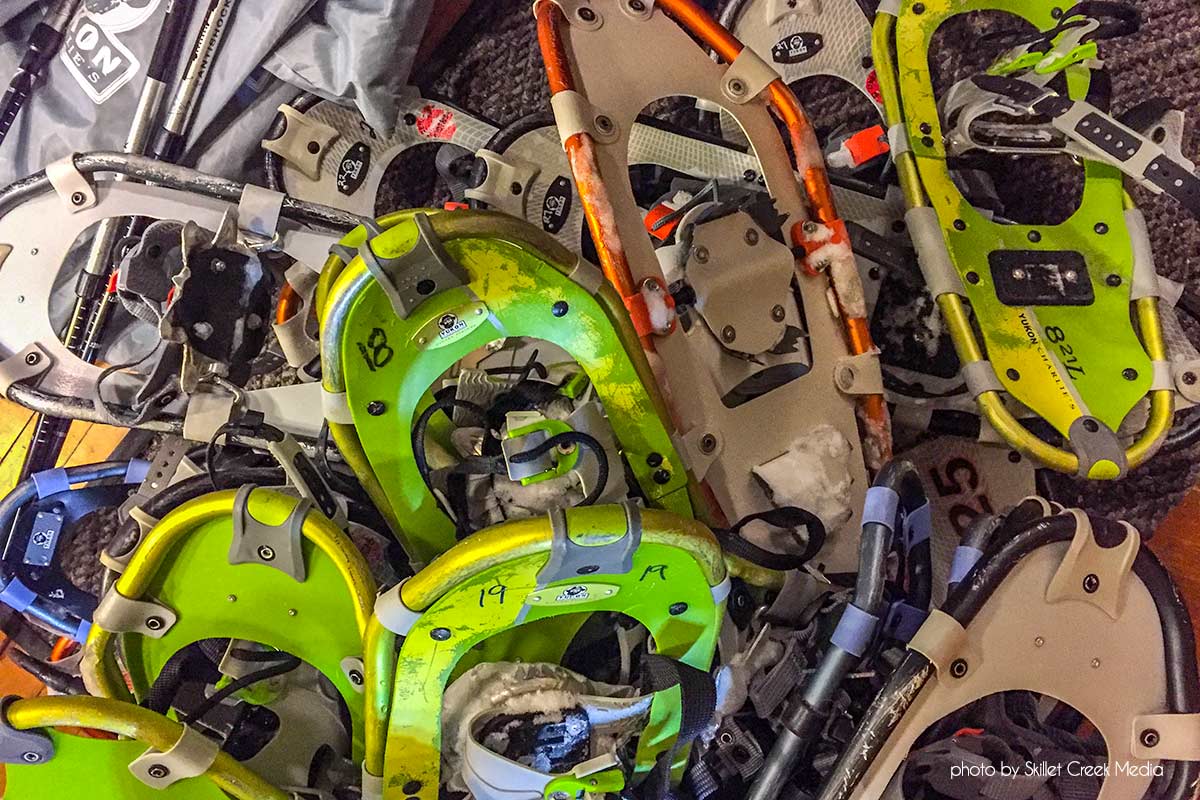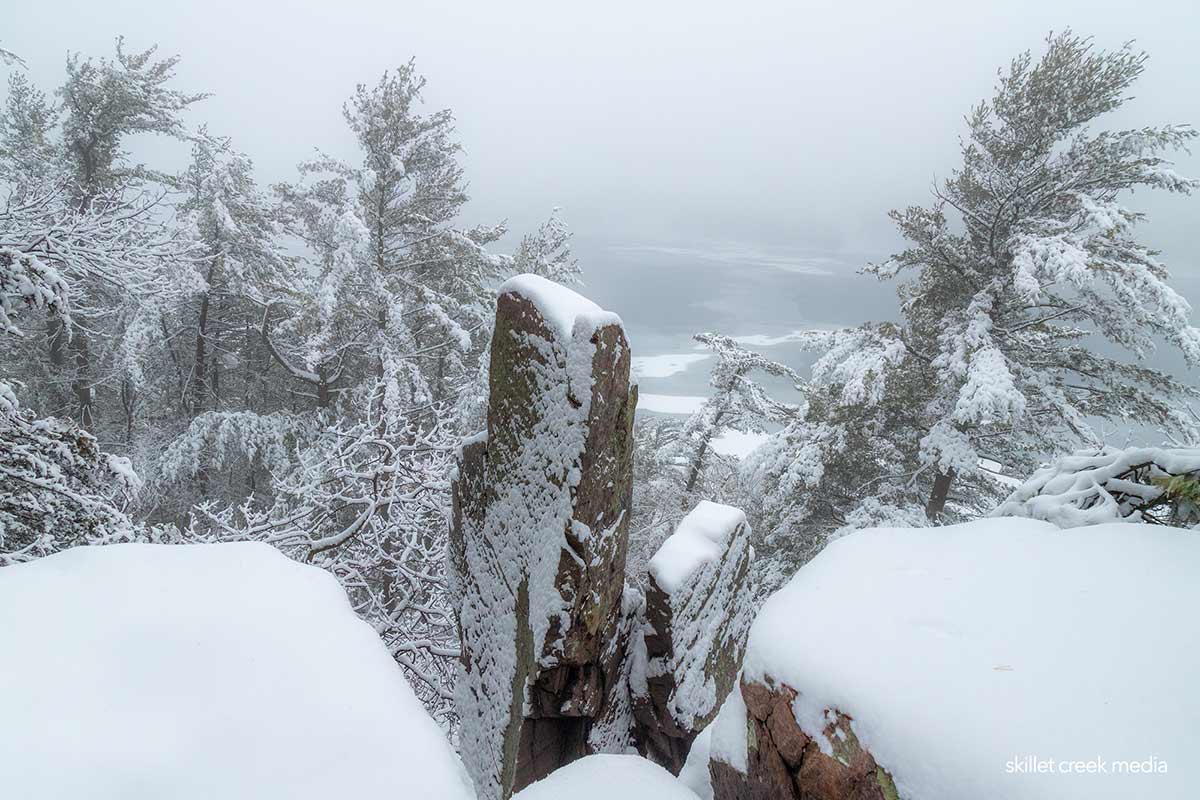Beautiful ice formations have returned to Mirror Lake State Park! We expect the ice to…
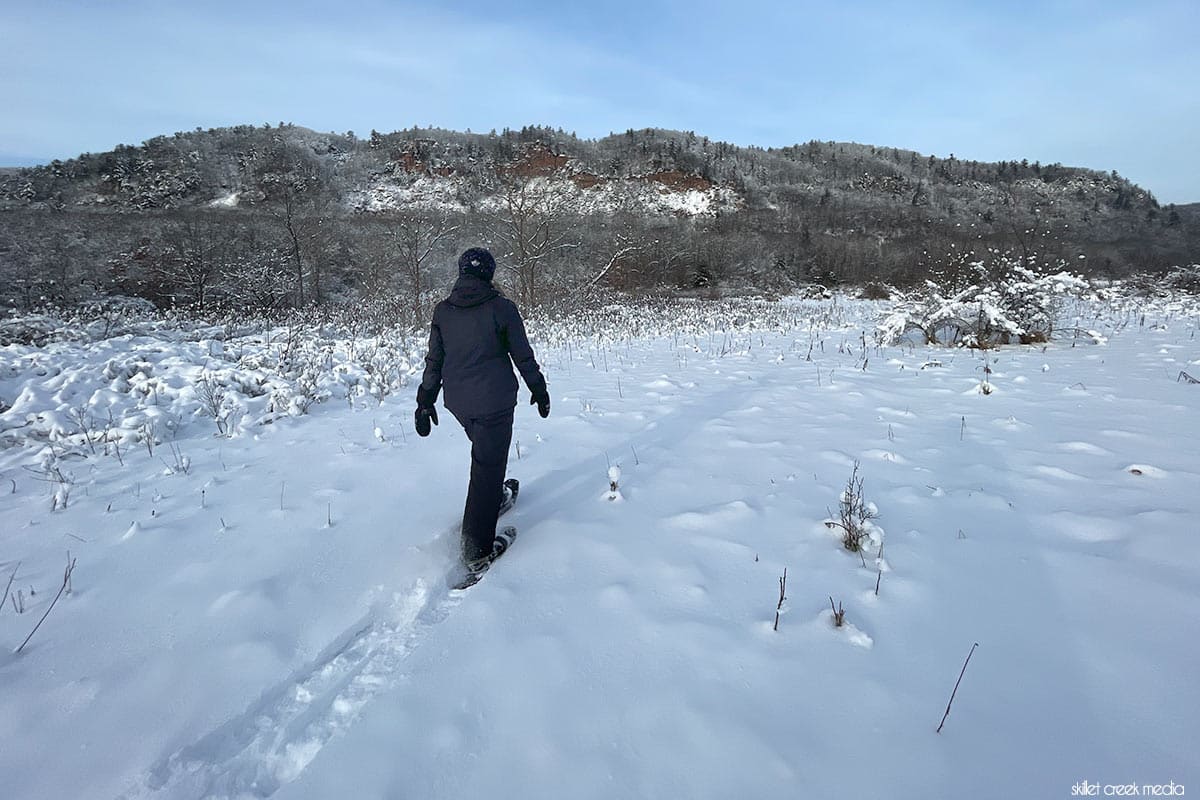
It’s snowshoe season at Devil’s Lake State Park!! With anywhere from 5 to 10 inches of snow on the ground and more to come this week, it’s a wonderful time to get out and explore! And while ice cleats are your go-to footwear on the trails right now, snowshoes open up some amazing possibilities!
Snowshoes Are NOT Ice Cleats
Let’s start here. When you’re new to snowshoeing or simply don’t know a park very well, it’s pretty common to wear snowshoes on compressed and icy trails. Thing is, that’s not really what snowshoes are meant for. Snowshoes provide a wider surface area than shoes or boots to better distribute your weight as you step down onto the snow. This helps you to sink less, and move more easily through deep snow. In general terms, the deeper the snow, the more surface area, or the larger snowshoes you may need. (Your body weight also helps determine the size snowshoe you will need.) But the point is, if the surface is already solid, like on a packed or icy trail, snowshoes are overkill… you’ll just need a good pair of ice cleats.
Learn More: How Snowshoes Work
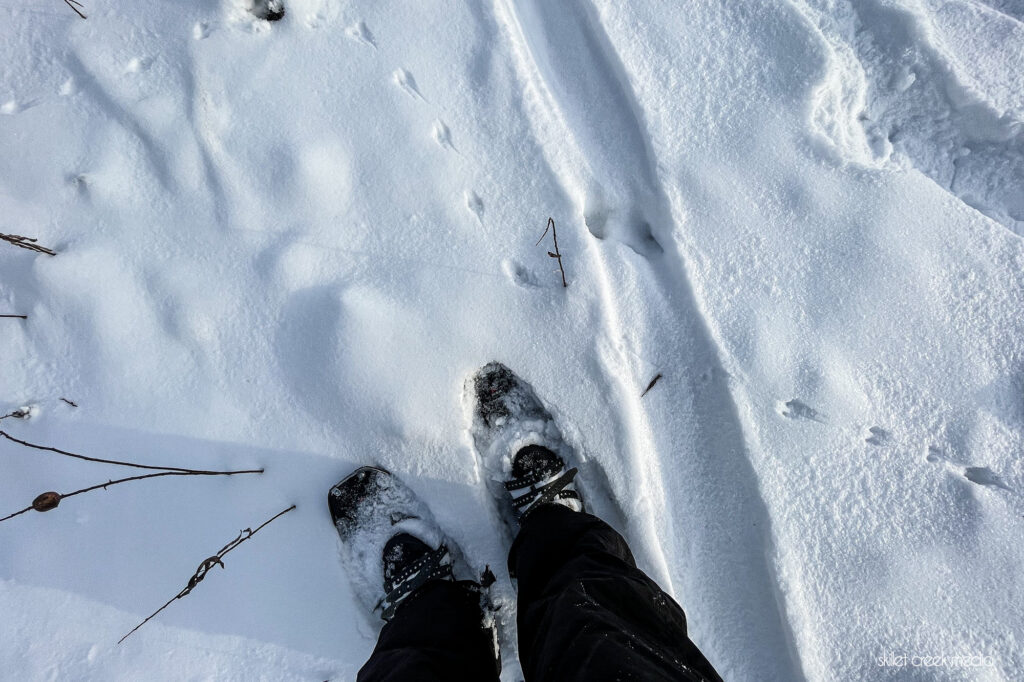
Why Go Off-Trail?
They say there are exceptions to every rule and snowshoes are a great example. Normally during the summer season, we spend a lot of time asking park visitors to stay on the trails. Going off trail much of the year can damage the landscape and spread invasive plant species. In fact, you can see all sorts of damage along the park’s East Bluff Trail caused by large numbers of hikers crushing the landscape until nothing can grow. But in deep snow and wearing snowshoes, you’ll likely do little damage to the frozen ground beneath your feet. With most plants now under the snow, it’s much easier to move through the landscape. What’s more, you’ll have many more opportunities not only to see new locations but to check for animal tracks and see what kind of wildlife has been moving through the area.
“Wilderness is not a luxury but a necessity of the human spirit, and as vital to our lives as water and good bread. – Edward Abbey
Know The Risks
Devil’s Lake State Park offers diverse and sometimes dangerous landscapes. Once you get out beyond the designated trails there are rocky cliffs, drop-offs, streams, ponds, and swamps… and all can be hidden under deep snow. You can get hurt out there! Unless you know the park intimately, you shouldn’t just take off in just any direction. However, there are a couple of good places to get off the trail even for first-time snowshoers.
Note: Wisconsin’s Holiday Hunt, Deer Hunting in the Park from Dec. 24, 2022–Jan. 1, 2023
Good Off-Trail Locations
We recommend Roznos Meadow on the southeast corner of the park and open areas around Steinke Basin, especially north of CTY DL. (Across from the parking lot.) We like both of these locations because you can practice your technique and explore these flat landscapes all within sight of your car! There are no cliffs or drops to worry about in these locations, but there are wetlands and marshy areas where you could end up with wet feet in warmer winters!
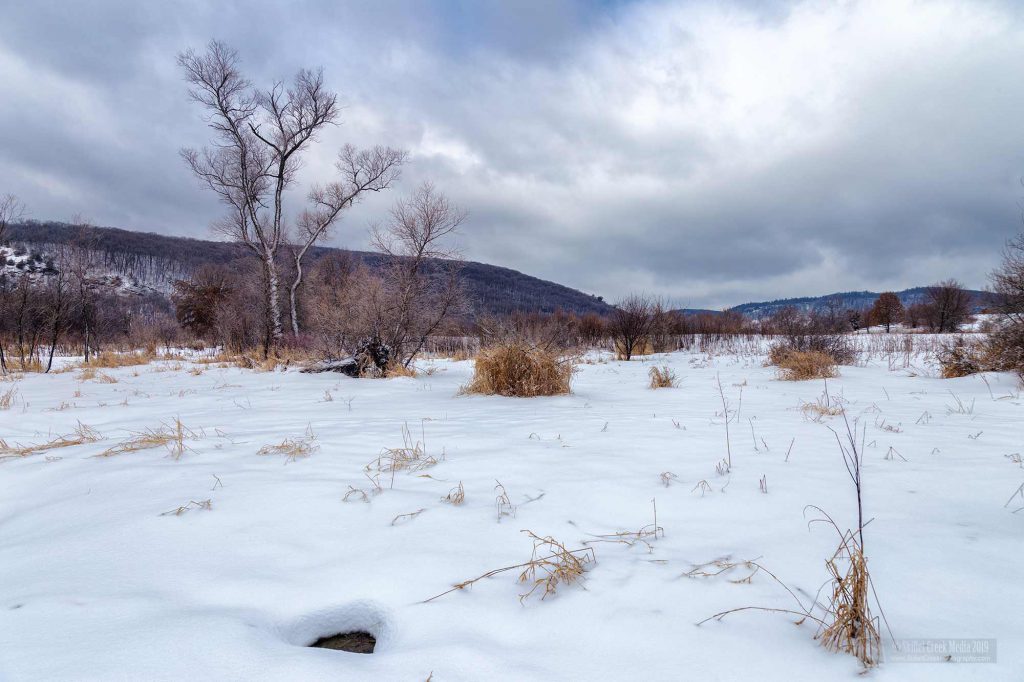
Borrow Snowshoes For Free!
Snowshoes are available to borrow for free at Devil’s Lake State Park! These can be borrowed anytime the Nature Center or North Shore Visitor Centers are open.
North Shore Visitor Center – Sunday – Saturday 9 a.m. – 4 p.m.
Nature Center Monday – Saturday 10 a.m. – 4 p.m.
The park’s snowshoes cannot be taken off the property. The snowshoes are handed out on a first-come, first-served basis.
Have Fun, and Stay Safe!
So in the end remember, wear ice cleats for icy hiking trails and snowshoes for deep snow. Take advantage of snowshoes to explore new spaces within the park, but be aware of the risks. And like we say with all winter treks in the wilderness, be prepared! Dress in warm layers. Pack a first-aid kit and firestarter. Take food & water. Tell someone where you are going and how long you’ll be gone. Have a cellphone in additons to another signaling device such as a SPOT or Epirb. This is not a complete list, but a good start! In the end, your safety is all up to you!

For nearly 2 decades the Skillet Creek blog has focused on 3 main goals; To inspire you to visit and explore the Devil’s Lake region, to help you get the most your visit by sharing tips, events, and other helpful information. Lastly to advocate for our environment & wildlife and talk about how we can keep our natural areas amazing now and into the future! That last goal can sometimes cause controversy, but it’s the only way we can accomplish the first two. – Derrick Mayoleth, Owner.

